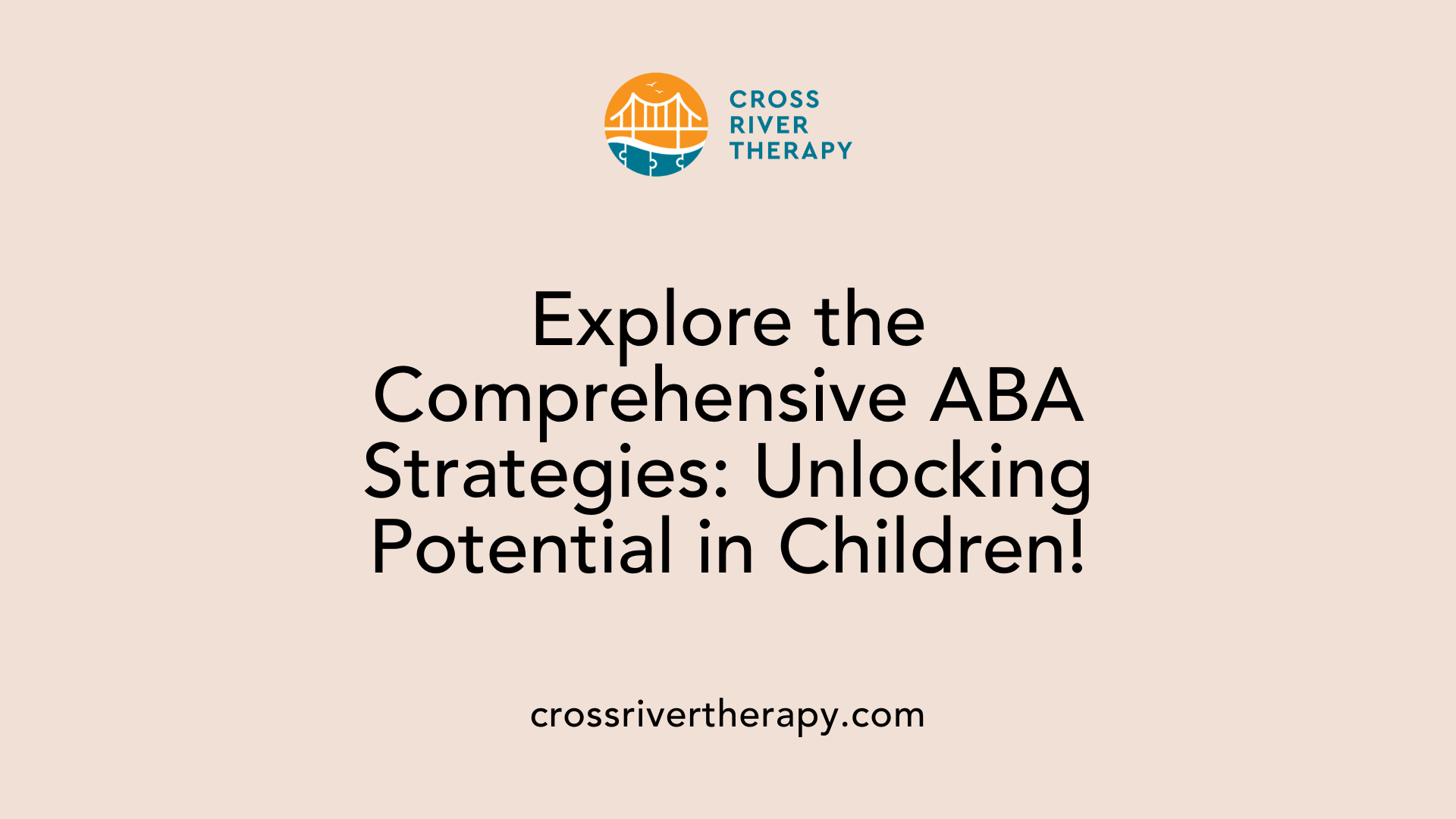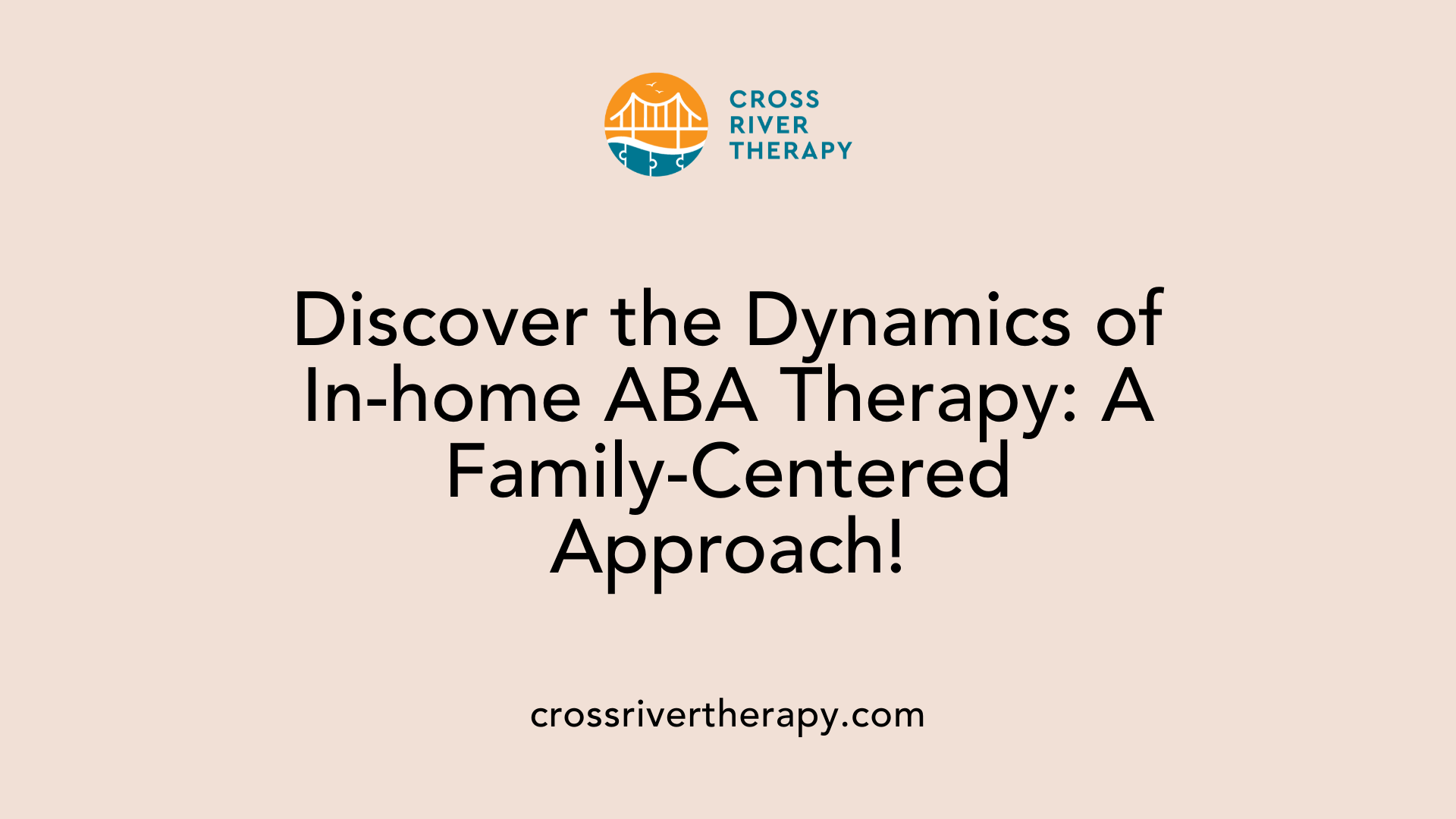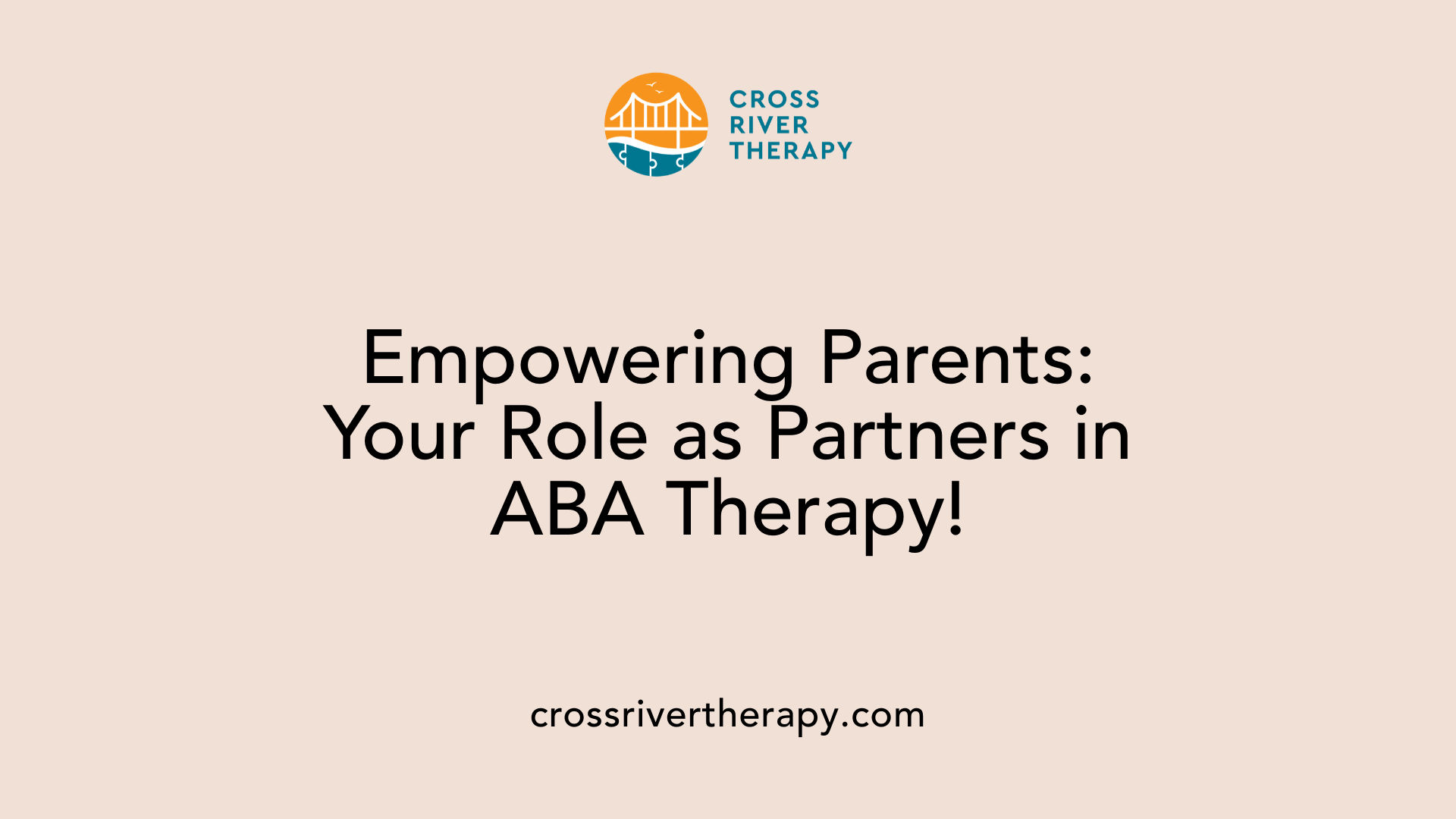Common At-Home ABA Therapy Techniques and Strategies
Unlocking the Potential of ABA Therapy at Home
Understanding and Implementing ABA at Home
Applied Behavior Analysis (ABA) therapy offers powerful techniques for promoting positive behaviors and skill development in children with autism. By bringing these strategies into the home environment, parents and caregivers can play a pivotal role in a child's development journey. This article explores various ABA techniques that can be seamlessly integrated into daily routines, ensuring a supportive and engaging atmosphere for learning.
Comprehensive Strategies Used in ABA

What strategies do ABA therapists use?
ABA therapists employ a variety of strategies to promote positive behavior and skill development in children.
Positive and Negative Reinforcement
- Positive reinforcement involves adding a pleasant stimulus after a desired behavior. For example, if a child receives praise for putting away toys, they are more likely to repeat that behavior.
- Negative reinforcement entails removing an unpleasant stimulus to encourage a behavior. For instance, teaching a child to ask for a break when overwhelmed allows them to avoid distress, reinforcing their communication skills.
Video Modeling
- In this technique, children watch videos demonstrating specific behaviors to learn through imitation. This approach is particularly effective for social interactions and emotional expression, as it gives children visual examples that they can emulate in real-life situations.
Prompting and Fading
- Therapists use verbal or physical prompts to support children in completing tasks. Gradually, these prompts are faded away to promote independence as the child becomes more proficient in achieving the task without assistance.
Natural Environment Teaching (NET)
- Teaching within the child's natural settings enhances learning by providing context to the skills being taught. For instance, incorporating lessons during playtime or everyday interactions ensures that the skills are relevant and applicable outside therapy sessions.
Behavior Chain
- This method breaks down complex tasks into smaller, manageable steps. Each segment is taught sequentially, often with prompts, making it easier for children to master skills gradually. For example, learning to wash hands may include several distinct stages, from turning on the faucet to drying hands.
Generalization
- This technique ensures that children can apply learned skills across various settings and situations. For effective generalization, skills need to be taught in diverse environments and contexts to enhance their flexibility and usage in real-life scenarios.
Behavior Contracts
- Often used with older children, behavior contracts outline specific expectations and rewards, fostering a sense of responsibility and accountability in children. These written agreements between caregivers and children clarify desired behaviors and the consequences that follow.
By employing these strategies, ABA therapists effectively tailor interventions to individual needs, advancing skills in a structured and supportive manner.
The Dynamics of In-home ABA Therapy

What does in-home ABA therapy look like?
In-home ABA therapy is a unique blend of structured instruction and naturalistic teaching tailored to each child’s needs. Conducted within the comfort of their home, it offers a familiar environment, which can significantly reduce anxiety and facilitate learning.
Structured Instruction
Structured instruction involves clear guidelines and predictable routines, helping children understand expectations. Using techniques such as Discrete Trial Training (DTT) and prompting, therapists can focus on teaching specific skills one at a time. This can range from basic self-care, like dressing or grooming, to more complex tasks, such as managing emotions effectively.
Naturalistic Teaching
By incorporating natural environment teaching (NET), therapists take advantage of learning moments during everyday activities. This approach allows children to practice skills in real-life contexts, whether during play or daily chores, thereby promoting generalization of learned behaviors outside therapy sessions.
Skill Development
In-home ABA therapy prioritizes skill development across multiple areas, including communication, social interactions, and self-sufficiency. For younger children, activities may include sorting games and role-playing to encourage turn-taking and sharing. As children progress, the focus can shift towards life skills that are vital for independence later in life.
Family Involvement
Family participation is crucial in in-home ABA therapy. Engaging parents and siblings not only strengthens family bonds but also enhances the learning experience. Parents learn strategies to reinforce skills between sessions, ensuring that practice continues beyond therapy time, making the learning more impactful.
This family-centered approach fosters a supportive environment, where each member can contribute to the child's development, leading to improved outcomes in social and behavioral skills.
Parents as Partners in ABA Therapy

What do parents do during in-home ABA therapy?
During in-home ABA therapy, parents play a vital role by directly participating in therapy sessions and creating a nurturing environment that promotes learning. A Board Certified Behavior Analyst (BCBA) usually establishes the initial program through a comprehensive assessment, formulating a custom ABA plan tailored to the child's needs.
Parents undergo training from the BCBA, learning to implement essential techniques effectively, such as positive reinforcement and prompting. This training is crucial, as understanding these core principles enables parents to boost the effectiveness of the therapy.
Parent Involvement
Integrating these strategies into daily routines opens up numerous learning opportunities. For instance, while playing or during meal times, parents can apply techniques like shaping or modeling to reinforce desirable behaviors. By incorporating familiar contexts, children can practice skills in a natural setting, making learning more relevant and engaging.
Training and Implementation
Furthermore, parents are encouraged to maintain consistency across different caregivers. When everyone involved applies the same methods and reinforcement strategies, it aligns expectations for the child, thereby enhancing behavioral progress.
Data Collection
In addition to therapy implementation, parents are also engaged in data collection. This involves tracking specific behaviors and skills to monitor improvements over time effectively. Observing and recording behaviors enables parents to provide valuable feedback to the BCBA, making it possible to refine interventions as necessary.
Consistency
Consistency is fundamental in home-based ABA therapy. Establishing structured routines can help manage the child's anxiety and encourage compliance. By actively participating in the process, parents not only foster their child's growth but also deepen their understanding of behavior management techniques, further solidifying the love and support necessary for effective learning.
Effective Home-based ABA Activities
How can ABA therapy activities be implemented at home?
Implementing ABA therapy activities at home can be both effective and enjoyable for children. Engaging exercises like sorting numbers, colors, and different emotions can significantly enhance cognitive and emotional development. These activities can serve not only as learning opportunities but also as fun interactions between parents and children.
Engaging Exercises
- Sorting Activities: Use everyday objects for sorting exercises. Kids can sort toys by color, size, or type. This reinforces categorization skills and improves focus.
- Emotion Games: Introduce games where children can identify or express emotions—this promotes emotional intelligence and communication skills.
- Puzzles: Completing puzzles helps with problem-solving and builds fine motor skills.
Structured Routines
Establishing structured routines is crucial. Children thrive on predictability, which helps reduce anxiety. Here’s how structured routines can be implemented:
- Visual Supports: Use visual timers or charts to display daily tasks and activities. This assists children in understanding their schedule and fosters independence.
- Consistent Timing: Regularly scheduled times for activities, such as educational play or homework, reinforce learned behaviors positively.
Reinforcement Strategies
Reinforcement strategies crucially shape behavior during these activities. Positive reinforcement can include:
- Immediate Rewards: Praising a child or providing a small reward immediately after desired behavior occurs can boost motivation.
- Behavior Contracts: Set up agreements where children can earn privileges based on demonstrating specific behaviors.
Child Interest Tailoring
Tailoring activities to a child's interests significantly increases engagement. For example:
- Utilizing Favorite Toys: Incorporate toys your child loves into learning activities to keep them motivated.
- Technology: Use Augmented and Alternative Communication (AAC) apps to help children express their needs and participate in learning effectively.
By combining these strategies, ABA therapy at home becomes a practical, enjoyable, and meaningful experience that can enhance children's learning and development.
How ABA Enhances Home Life

How does ABA work in the home setting?
ABA (Applied Behavior Analysis) is particularly effective in home environments where children learn essential life skills through direct interaction. By embedding lessons into daily routines, therapists can help children master skills such as dressing themselves or engaging positively with siblings. This familiar context reduces anxiety and increases participation, making learning more impactful.
What technology is integrated into ABA therapy?
The integration of technology within ABA therapy is on the rise, significantly enhancing its effectiveness. For instance, virtual reality (VR) offers immersive training opportunities that simulate real-world interactions. Research indicates that VR training can lead to substantial improvements in daily living skills, emotional regulation, and recognition. Using such technological tools not only makes learning engaging but also provides practical, real-world practice.
What are the emotional benefits of ABA?
The emotional benefits of ABA therapy extend well beyond skill acquisition. By encouraging positive behaviors through methods such as positive reinforcement and functional communication strategies, children develop greater emotional awareness and self-regulation. As children become more adept at expressing their needs appropriately, their frustration often diminishes, leading to improved social engagement and interpersonal skills. This emotional growth promotes a sense of confidence and independence in children, contributing positively to their overall wellbeing at home.
Key Topics in Home-Based ABA Therapy
| Topic | Description | Benefits |
|---|---|---|
| Teaching Life Skills | Skills embedded in daily routines enhance learning. | Improved self-sufficiency at home. |
| Technology Integration | Incorporates tools like VR for skill training. | Engaging and immersive learning experiences. |
| Emotional Benefits | Focus on emotional regulation decreases frustration. | Boosts confidence and social skills. |
ABA therapy strategically supports children in familiar settings, promoting effective learning while also building valuable life skills and emotional wellbeing.
The Role of Reinforcement in ABA
How is reinforcement used in ABA therapy?
In Applied Behavior Analysis (ABA) therapy, reinforcement is a fundamental strategy that plays a significant role in shaping behaviors. Reinforcement can be classified into two types: positive and negative.
- Positive reinforcement involves adding a pleasant stimulus after a desired behavior is exhibited. This could be verbal praise, a small toy, or a privilege, motivating the child to repeat the behavior. For example, when a child successfully zips up their coat and receives praise, it reinforces the behavior, increasing the chances of it happening again.
- Negative reinforcement, on the other hand, refers to the removal of an unpleasant stimulus after the desired behavior occurs. An instance of this could be teaching a child to request a break when they feel overwhelmed. By doing so, the child can avoid distressing situations, which reinforces the adaptive behavior of asking for help instead of acting out.
What is the importance of consistent application?
Consistency in the application of reinforcement techniques is essential in ABA therapy. When caregivers consistently apply reinforcement, children develop a clear understanding of what behaviors are appropriate. Mixed signals can lead to confusion, making it difficult for children to discern which actions are rewarded and which are not. For example, if a child receives praise for sharing one day but not the next, they may struggle to connect sharing with positive outcomes.
How does this prevent confusion in children?
Using reinforcement consistently helps establish predictability in a child's learning environment. Children thrive when they know what behaviors lead to rewards and which do not result in reinforcement. This structured approach not only promotes desirable behaviors but also contributes to a child’s overall understanding of social norms and expected responses in various situations. By fostering an organized reinforcement framework, caregivers can significantly enhance children's learning and behavioral outcomes.
Using Prompting and Fading Techniques
What are prompting and fading in ABA therapy?
Prompting and fading are essential techniques in ABA therapy used to teach new skills by initially providing assistance that is systematically reduced as the child becomes more proficient. Prompting can involve various forms such as:
- Verbal cues (e.g., saying the next step)
- Gestures (e.g., pointing to the next action)
- Physical assistance (e.g., guiding the child’s hands)
This support ensures that the child can successfully complete tasks and learn skills.
Guided Learning
The process begins with significant guidance to ensure the child has the necessary support to learn a new behavior. This approach is beneficial for tasks like:
- Zipping up a coat
- Completing a puzzle
By allowing the child to experience success early on, confidence is built, laying a foundation for future independence.
Promoting Independence
As the child becomes more skilled, prompts are gradually faded. This might mean:
- Using fewer verbal cues as the child learns the steps
- Reducing physical guidance slowly over time
This gradual reduction encourages the child to take initiative and perform tasks independently, enhancing their self-sufficiency.
Gradual Reduction of Assistance
The systematic fade of prompts is crucial, as it allows children to practice skills in a more natural context. Fading techniques ensure that children:
- Don't become reliant on prompts
- Can generalize learned skills across different environments
In essence, prompting and fading not only support skill acquisition but also foster long-term independence and confidence.
Embracing Natural Environment Teaching (NET)
What is Natural Environment Teaching (NET) in ABA therapy?
Natural Environment Teaching (NET) is an innovative approach within Applied Behavior Analysis (ABA) that prioritizes real-world learning experiences over traditional, structured sessions. The cornerstone of NET is the belief that children absorb and retain skills more effectively when they are taught in the contexts they naturally encounter in their daily lives.
Real-world Learning
When using NET, therapists capitalize on a child's usual environment, ensuring that learning happens during play or routine activities. For instance, during a playdate, a child might learn turn-taking not through drills but by engaging with peers organically. This situational teaching approach not only makes learning more relevant but also enhances the child's motivation and engagement.
Generalization
One critical advantage of NET is its focus on generalization. By teaching skills in authentic settings, children are better equipped to apply what they learn beyond the therapy context. They learn to navigate social skills, communication, and self-care strategies in various environments, making their acquired skills more functional and meaningful in everyday life.
Child's Natural Settings
NET encourages children's learning to be rooted in their interests and motivations, utilizing activities and interactions that they find enjoyable. This personalization not only facilitates skill acquisition but also creates positive associations with learning, further enhancing the likelihood of retention and application.
| Aspect | Description | Benefits |
|---|---|---|
| Learning Context | Real-world settings like home or school. | Promotes practical skill application. |
| Interest-Based | Engages children through activities they enjoy. | Enhances motivation and engagement. |
| Focus on Generalization | Skills learned are applicable in multiple settings outside of therapy. | Increases flexibility and adaptability. |
Behavior Contracts for Responsibility
What role do behavior contracts play in ABA?
Behavior contracts in Applied Behavior Analysis (ABA) serve a crucial function in establishing clear expectations and consequences for children. These written agreements are drawn up between caregivers and children, detailing specific behaviors that need to be addressed, as well as the rewards that can be achieved by adhering to those expectations. This clarity helps children comprehend the direct connection between their actions and the outcomes, which fosters a sense of responsibility and accountability.
Establishing Agreements
Creating behavior contracts involves an interactive process where both the caregiver and the child discuss and agree on the targeted behaviors. This collaborative dialogue not only empowers the child by including them in the decision-making process but also ensures that the goals set are realistic and attainable. Here’s a quick overview of the steps involved in establishing an effective behavior contract:
- Identify Target Behaviors: Focus on one or two specific behaviors to change.
- Discuss Expectations: Clearly outline what is expected and why it matters.
- Define Rewards: Specify what rewards will be given for achieving these behavior goals.
Encouraging Accountability
Once a contract is established, it can significantly enhance a child's accountability. The visual nature of a written agreement acts as a constant reminder of their commitments, which is especially beneficial during challenging moments. The act of physically checking off completed goals can reinforce positive behavior effectively.
Reward Systems
Incorporating a reward system into the contract is essential. Rewards can range from verbal praise to tangible incentives, such as extra playtime or small treats. This immediate positive reinforcement not only increases the likelihood of the desired behavior being repeated but also makes the process engaging for the child. The periodic review of the contract helps to maintain enthusiasm and adjust goals based on the child’s progress,
In conclusion, behavior contracts are invaluable tools in ABA, providing structure and motivation, leading to enhanced learning outcomes for children.
Understanding the Core of ABA Therapy: A-B-C Analysis
What is the A-B-C Model in ABA therapy?
The A-B-C Model in ABA therapy is a pivotal framework used to scrutinize the elements that influence behavior. It stands for Antecedent, Behavior, and Consequence. This model helps therapists and caregivers break down behaviors systematically:
- Antecedent: This is what happens before a behavior occurs. Understanding it can provide insights into triggers.
- Behavior: The action itself that needs to be addressed, either to encourage or discourage it.
- Consequence: This is what happens immediately after the behavior. It can either reinforce the behavior or serve as a punishment.
Analyzing Behaviors
Using the A-B-C framework aids in the comprehensive analysis of behaviors. By observing the antecedents and consequent responses, caregivers can pinpoint specific triggers and responses that fuel behaviors. This clear breakdown facilitates a strategic approach to interventions.
Behavior Modification
Once behaviors are analyzed, modifications can be tailored. For instance, if a child melts down when asked to tidy their toys, changing the antecedent by offering choices or visual aids can reduce frustration. This creates an environment where positive behaviors are more likely to flourish.
Structured Interventions
Implementing structured interventions based on the A-B-C analysis allows for continuous improvement. Regular data collection helps track progress, making it easier to adjust strategies according to what's working or not. This data-driven approach is essential in sustaining effective ABA practices over time.
The Influence of Modeling and Video Techniques
How do modeling techniques work in ABA therapy?
Modeling techniques in ABA therapy center on the principle of observational learning, where children learn by watching others demonstrate specific behaviors. This method is instrumental in teaching social interactions and communication skills. For example, when a child observes a peer successfully sharing toys during play, they are more likely to imitate that behavior.
Video modeling enhances this concept by providing children with a visual representation of the expected behaviors. By watching videos that depict various scenarios, children can visualize and understand how to respond appropriately in similar situations. This is particularly effective in facilitating social skills and emotional expressions.
Observational Learning
Children often pick up on behaviors by observing adults or peers. This natural learning process is harnessed in ABA therapy to encourage positive interactions and coping strategies. By modeling desired behaviors, therapists use repetition and reinforcement to help embed these skills into the child’s repertoire.
Skill Acquisition
the integration of techniques like video modeling allows for consistent exposure to desired behaviors. Children can watch these videos multiple times. This repetition reinforces learning and aids in skill retention. Through practicing these observed skills in a natural setting, children gradually become proficient.
Social Skills Enhancement
A primary benefit of modeling and video techniques is the enhancement of social skills. Children often struggle with understanding social cues. By observing modeled behaviors, they gain insights into interactions, fostering better communication with peers. Over time, these skills become integrated into their everyday behavior, facilitating smoother social engagement.
Harnessing ABA for Home Use
Implementing ABA techniques at home offers a practical and effective means of supporting children with autism in their personal development. By understanding and applying a range of strategies tailored to the individual needs and environments of children, caregivers can foster meaningful progress and engagement. The integration of these strategies into home life not only enhances learning but also strengthens family bonds, making every interaction an opportunity for growth and discovery.
References
- Understanding ABA Techniques: 7 Strategies You Need to Know
- 10 Common ABA Therapy Techniques
- ABA Therapy at Home: All You Need to Know
- ABA Therapy Activities To Do At Home - Autism Parenting Magazine
- Home-based ABA Therapy: A Comprehensive Guide
- Applied Behavior Analysis (ABA) | Autism Speaks
- Understanding ABA Techniques: 7 Strategies You Need to Know



